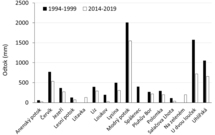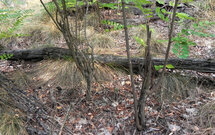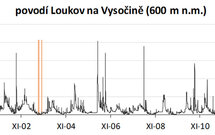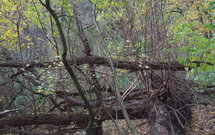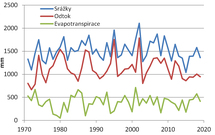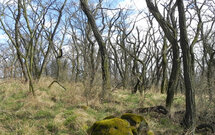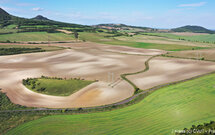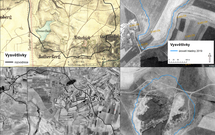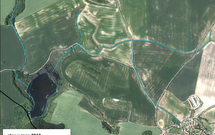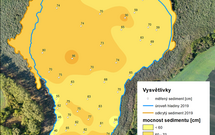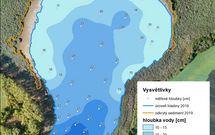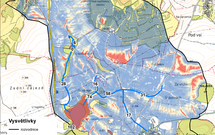Nature Conservation 6/2009 — 16. 12. 2009 — On Nature in the Czech Republic — Print article in pdf
The Krušné hory/ Ore Mts. – Sad Mountains
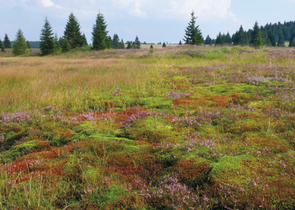
The Krušné hory/Ore Mts. stretches for 130 km along the north-western Czech-German border. Low mountains is a part of the Bohemian Massif and it shape has been essentially influenced by folding, denundation and tectonic activities.
Only few peaks in the south-western part reach a thousand meter height: of them, Mt. Klínovec (1,224 m a.s.l.) is the highest. In the area, there are many peat-bogs, totalling 6,371 hectares. They are inhabited with the typical plants, e.g.Common Sundew or Round-leaved Sundew (Drosera rotundifolia), Mud Sedge (Carex limosa) or some ombrotrophic Peat Moss (Spaghnumspp.) species. The model sites include Přebuzké rašeliniště Peat-bog Nature Monument or Božídarské rašeliniště Peat-bog National Nature Reserve, where, among others, a rare population of the Peat-bog Western Marsh Orchid (Dactylorhiza majalissubsp. turfosa) occurs. In the Krušné hory/Ore Mts., there also are grassland habitats, represented by rich False Oat (Trisetum spp.) meadows, where the Baldmoney (Meumathamanticum) prevails. Other remarkable habitats include those evolved at the sites of extensive mining activities which are step-by-step colonised by the specific secondary heath vegetation. Mining drops should also be mentioned: their wet microclimate supports sub-alpine species, e.g.mosses of the genus Mielichhoferaor Mielichhoferiana. Prevailing Norway Spruce (Picea abies) forests have been damaged by air pollution from industrial sources. At present, the substantial part of forest growths is located in the zones most heavily affected by air-pollution. Therefore, they are replaced with climax tree species – the Norway Spruce, European or Common Beech (Fagus sylvatica) and European Silver Fir (Abies alba). Well-preserved broad-leaved deciduous forests in the Krušné hory/Ore Mts. foothills harbour the original fauna, e.g.the Red-breasted Flycatcher (Ficedula parva), Black Stork (Ciconia nigra), Edible Dormouse (Glis glis) or Stag Beetle (Lucanus cervus). The Common Lizard, also known as the Viviparous Lizard (Zootoca vivipara) and the Corncrake (Crex crex) are typical for meadow enclaves. Extensive mountain blanket peat-bogs are inhabited with the specialized butterfly species (e.g.,the Cranberry Fritillary Boloriaaquilonarisand Moorland Clouded Yellow Colias palaeno). The endemic Carabusmenetriesipacholeiground beetle also occurs there. Lack of large-size territorial protection that would effectively control extensive development plans (building golf and downhill courses or wind farms) is the main obstacle for nature conservation and landscape protection there. Establishing a Protected Landscape Area should solve the above difficulty.
Název připojené galerie
Quisque egestas velit non nulla fermentum, aliquet pharetra nunc malesuada. Nullam molestie vel diam non tincidunt. Sed pulvinar lacinia nunc et consectetur. Duis varius leo ac ex scelerisque, ullamcorper eleifend massa consectetur. Nullam in metus ac arcu pellentesque venenatis ac id lorem. Nulla nec ipsum sed enim sodales blandit a sit amet ex.


